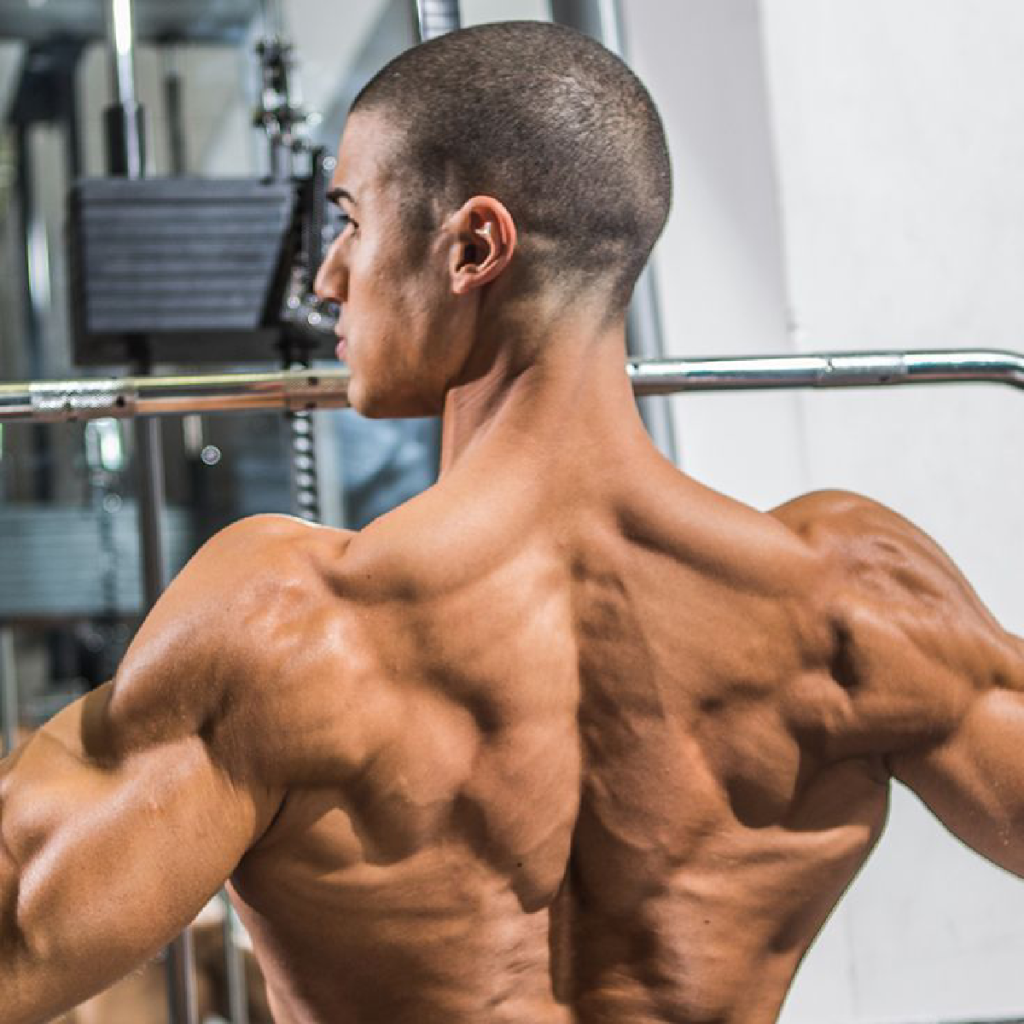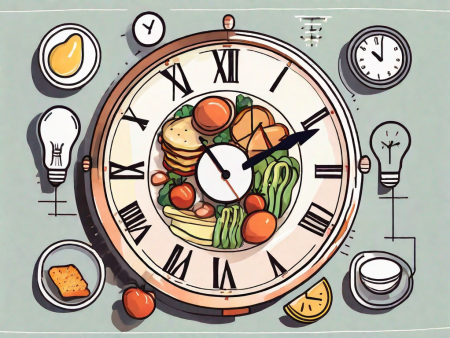Learn effective exercises and techniques to build strong and defined trapezius muscles in your upper back.
How to Build Trapezius (Upper Back) Muscles
The trapezius muscles, located in the upper back, play a vital role in maintaining good posture and providing stability to the shoulder and neck. If you want to develop strong and defined trapezius muscles, it’s essential to understand their anatomy and function.

Understanding the Trapezius Muscles
The trapezius muscles are a large pair of triangular-shaped muscles that extend down the neck and upper spine. They are divided into three distinct sections: the upper trapezius, middle trapezius, and lower trapezius. Each section has its own specific functions and contributes to overall upper back strength and stability.
Anatomy of the Trapezius Muscles
The upper trapezius originates from the base of the skull and extends down to the middle of the back. The middle trapezius starts from the spine of the scapula (shoulder blade) and inserts into the same region as the upper trapezius. The lower trapezius originates from the lower portion of the scapula and attaches to the spine and ribs.
Function of the Trapezius Muscles
The trapezius muscles have several functions that are crucial for proper movement and stability. The upper trapezius helps elevate and rotate the shoulder blades. The middle trapezius pulls the shoulder blades together, while the lower trapezius depresses and stabilizes them.
Importance of Strong Trapezius Muscles
Having strong trapezius muscles not only improves your overall appearance but also offers many important benefits for your daily life and athletic performance.
The trapezius muscles, located on the upper back and neck, play a crucial role in maintaining proper posture and supporting the movement of the shoulder blades. These muscles are often overlooked, but their strength and functionality are essential for a healthy and active lifestyle.
Benefits of Strong Trapezius Muscles
Let’s delve deeper into the benefits of having strong trapezius muscles:
- Improved posture: Strong trapezius muscles help pull the shoulders back, preventing the rounded shoulder posture that often results from desk work or poor posture habits. By maintaining proper alignment, you not only look more confident but also reduce the risk of developing chronic pain or discomfort.
- Reduced risk of shoulder injuries: Well-developed trapezius muscles provide stability to the shoulder joint, reducing the risk of strains, sprains, and other common shoulder injuries. Whether you’re an athlete or simply carrying heavy grocery bags, having strong trapezius muscles can protect your shoulders from unnecessary strain.
- Enhanced athletic performance: Strong trapezius muscles contribute to better shoulder mobility and upper body power, benefiting activities such as weightlifting, swimming, and throwing sports. Whether you’re aiming to improve your personal records or excel in your chosen sport, having a solid foundation of trapezius strength can give you a competitive edge.
Risks of Weak Trapezius Muscles
On the flip side, neglecting your trapezius muscles can lead to various issues and limitations:
- Postural problems: Weak trapezius muscles can result in rounded shoulders, forward head posture, and an overall slouched appearance. This not only affects your physical appearance but can also lead to chronic neck and back pain.
- Increased injury risk: Insufficient trapezius strength may make you more susceptible to shoulder dislocations, strains, and other injuries. Without the necessary support from strong trapezius muscles, your shoulders are more vulnerable to the demands of daily activities and exercise.
- Limited upper body mobility: Weak trapezius muscles can restrict your range of motion and hinder performance in activities that require good shoulder mobility, such as swimming or overhead lifting. This limitation can affect your overall fitness level and prevent you from reaching your full potential in various physical pursuits.
Given the importance of strong trapezius muscles, it is crucial to incorporate exercises that target this muscle group into your fitness routine. Whether it’s through weightlifting, bodyweight exercises, or specific trapezius-focused workouts, dedicating time and effort to strengthen your trapezius muscles will yield numerous benefits for your overall well-being and physical performance.
Essential Exercises for Trapezius Muscles
Now that you understand the importance of strong trapezius muscles, let’s delve into some effective exercises that can help you build and sculpt your upper back.
The trapezius muscles, commonly referred to as the traps, are a group of large muscles located in the upper back and neck region. These muscles play a crucial role in maintaining good posture, stabilizing the shoulder blades, and supporting various upper body movements. By incorporating targeted exercises into your workout routine, you can strengthen and develop your trapezius muscles, enhancing both their functionality and aesthetic appeal.
Dumbbell Shrugs
Dumbbell shrugs are a classic exercise for targeting the upper trapezius. Stand with feet shoulder-width apart, hold a dumbbell in each hand with arms straight down, and shrug your shoulders up towards your ears. This movement effectively isolates the upper trapezius, helping to build strength and definition in this area. As you perform the exercise, focus on maintaining proper form and avoid using momentum to lift the weights. Hold the contracted position for a brief pause, feeling the tension in your traps, and then lower the dumbbells back down. Repeat for the desired number of reps.
It’s important to note that dumbbell shrugs can be performed using various grips, such as a neutral grip or an overhand grip. Experimenting with different grips can help target different areas of the trapezius muscles, providing a well-rounded workout for your upper back.
Barbell Rows
Barbell rows are a compound exercise that engages multiple muscle groups, including the middle and lower trapezius. This exercise not only strengthens the trapezius muscles but also works the muscles of the upper back, biceps, and forearms. To perform barbell rows, start by bending at the hips with a slight knee bend, holding a barbell with an overhand grip. Keep your back straight and pull the barbell up towards your chest, squeezing your shoulder blades together. This movement targets the middle and lower trapezius, helping to improve overall back strength and posture. Lower the barbell back down in a controlled manner, feeling the stretch in your trapezius muscles. Repeat for the desired number of reps.
When performing barbell rows, it’s crucial to maintain proper form to avoid straining your lower back. Keep your core engaged, shoulders pulled back, and focus on using your back muscles to initiate the movement. Avoid using excessive momentum or jerking motions, as this can compromise the effectiveness of the exercise and increase the risk of injury.
Face Pulls
Face pulls primarily target the middle and lower trapezius muscles, helping to improve shoulder stability and posture. This exercise also engages the rear deltoids, rhomboids, and rotator cuff muscles. To perform face pulls, attach a rope or resistance band to a high pulley. Stand with feet shoulder-width apart and grab the rope handles with palms facing each other. Pull the rope towards your face, squeezing your shoulder blades together and keeping your elbows high. This movement effectively activates the middle and lower trapezius, promoting muscle growth and strength development. Slowly release the tension and repeat for the desired number of reps.
When performing face pulls, it’s essential to maintain control throughout the movement and avoid using excessive weight. Focus on the mind-muscle connection, feeling the contraction in your trapezius muscles with each repetition. Additionally, ensure that your shoulders remain relaxed and avoid shrugging or tensing them up during the exercise.
Incorporating these essential exercises into your workout routine can help you develop strong and well-defined trapezius muscles. Remember to start with lighter weights and gradually increase the resistance as your strength improves. Consistency, proper form, and adequate rest and recovery are key to achieving optimal results. So, get ready to strengthen your trapezius muscles and take your upper back workout to the next level!
Nutrition for Muscle Growth
When it comes to building strong trapezius muscles, proper nutrition plays a vital role. One of the key components of a muscle-building diet is an adequate intake of protein. Protein is essential for muscle repair and growth, and without enough of it, your efforts in the gym may not yield the desired results.
So, what are some good sources of protein that you can include in your meals and snacks throughout the day? Well, there are several options to choose from. Lean sources of protein, such as chicken, fish, tofu, and Greek yogurt, are excellent choices. These foods not only provide you with the necessary protein but also offer other important nutrients that support overall health.
Chicken, for example, is not only a great source of lean protein but also contains essential amino acids that are crucial for muscle development. Fish, on the other hand, is rich in omega-3 fatty acids, which have anti-inflammatory properties and can aid in muscle recovery. Tofu, a popular choice among vegetarians and vegans, is a complete protein source that contains all the essential amino acids your body needs. And Greek yogurt, besides being a protein powerhouse, also provides calcium and probiotics, which can contribute to bone health and a healthy gut.
Protein Intake for Building Muscles
Now that you know the importance of protein in muscle growth, let’s talk about how much protein you should be consuming. The recommended daily protein intake for individuals looking to build muscle is around 0.8 to 1 gram of protein per pound of body weight. However, this can vary depending on factors such as your activity level, age, and overall health.
It’s also worth noting that the timing of your protein intake is crucial. To maximize muscle protein synthesis, it’s recommended to distribute your protein intake evenly throughout the day. This means consuming protein-rich foods or supplements in each meal and snack.
Importance of Hydration in Muscle Development
While protein is undoubtedly important for muscle development, another often overlooked factor is hydration. Staying properly hydrated is crucial for optimal muscle function, including the growth and development of your trapezius muscles.
When you’re dehydrated, your muscles can become fatigued more easily, leading to decreased performance and potentially hindering muscle growth. Additionally, proper hydration helps transport nutrients to your muscles, ensuring they have the necessary fuel for growth and repair.
So, how much water should you be drinking? The general recommendation is to drink at least eight 8-ounce glasses of water per day, but this can vary depending on factors such as your body weight, activity level, and climate. It’s also important to note that your water needs may increase if you’re engaging in intense physical activity or if you’re in a hot environment.
It’s a good idea to make a conscious effort to drink water throughout the day, especially before and after workouts. This will help ensure that you’re adequately hydrated and ready to give your trapezius muscles the support they need to grow and develop.
In conclusion, nutrition plays a crucial role in muscle growth, and when it comes to building strong trapezius muscles, protein intake and hydration are key factors to consider. By including lean sources of protein in your diet and staying properly hydrated, you can provide your muscles with the necessary nutrients and support for optimal growth and development.
Recovery and Rest for Muscle Growth

Importance of Sleep in Muscle Recovery
While exercise and nutrition are essential, don’t overlook the importance of rest and recovery in your muscle-building journey. Sleep is crucial for muscle repair and growth. Aim for 7-9 hours of quality sleep each night to give your trapezius muscles time to recover and grow stronger.
Active Recovery Techniques
In addition to sleep, incorporating active recovery techniques can help enhance muscle recovery and prevent excessive soreness. Consider including activities like light stretching, foam rolling, or yoga in your routine to promote blood flow and reduce muscle tension.
To build strong and defined trapezius muscles, it’s essential to understand their anatomy and function, perform targeted exercises, and support your efforts with proper nutrition, rest, and recovery. So, get ready to showcase your powerful upper back and enjoy the countless benefits of strong trapezius muscles!








… [Trackback]
[…] Read More here: rogueroutines.com/how-to-build-trapezius-upper-back-muscles/ […]
… [Trackback]
[…] Find More to that Topic: rogueroutines.com/how-to-build-trapezius-upper-back-muscles/ […]
… [Trackback]
[…] Find More on that Topic: rogueroutines.com/how-to-build-trapezius-upper-back-muscles/ […]
… [Trackback]
[…] Info on that Topic: rogueroutines.com/how-to-build-trapezius-upper-back-muscles/ […]
… [Trackback]
[…] Read More to that Topic: rogueroutines.com/how-to-build-trapezius-upper-back-muscles/ […]
… [Trackback]
[…] Info on that Topic: rogueroutines.com/how-to-build-trapezius-upper-back-muscles/ […]
… [Trackback]
[…] There you will find 51314 additional Information to that Topic: rogueroutines.com/how-to-build-trapezius-upper-back-muscles/ […]
… [Trackback]
[…] Read More to that Topic: rogueroutines.com/how-to-build-trapezius-upper-back-muscles/ […]
… [Trackback]
[…] Read More Information here to that Topic: rogueroutines.com/how-to-build-trapezius-upper-back-muscles/ […]
… [Trackback]
[…] Find More here to that Topic: rogueroutines.com/how-to-build-trapezius-upper-back-muscles/ […]
… [Trackback]
[…] Info on that Topic: rogueroutines.com/how-to-build-trapezius-upper-back-muscles/ […]
… [Trackback]
[…] Here you can find 1807 additional Info to that Topic: rogueroutines.com/how-to-build-trapezius-upper-back-muscles/ […]
… [Trackback]
[…] Information to that Topic: rogueroutines.com/how-to-build-trapezius-upper-back-muscles/ […]
… [Trackback]
[…] Here you can find 29848 additional Information to that Topic: rogueroutines.com/how-to-build-trapezius-upper-back-muscles/ […]
… [Trackback]
[…] Read More here to that Topic: rogueroutines.com/how-to-build-trapezius-upper-back-muscles/ […]
… [Trackback]
[…] Read More to that Topic: rogueroutines.com/how-to-build-trapezius-upper-back-muscles/ […]
… [Trackback]
[…] Here you can find 60548 additional Information to that Topic: rogueroutines.com/how-to-build-trapezius-upper-back-muscles/ […]
… [Trackback]
[…] Find More to that Topic: rogueroutines.com/how-to-build-trapezius-upper-back-muscles/ […]
… [Trackback]
[…] Find More on on that Topic: rogueroutines.com/how-to-build-trapezius-upper-back-muscles/ […]
… [Trackback]
[…] Find More on that Topic: rogueroutines.com/how-to-build-trapezius-upper-back-muscles/ […]
… [Trackback]
[…] There you can find 31795 additional Information to that Topic: rogueroutines.com/how-to-build-trapezius-upper-back-muscles/ […]
… [Trackback]
[…] Read More on that Topic: rogueroutines.com/how-to-build-trapezius-upper-back-muscles/ […]
… [Trackback]
[…] Info on that Topic: rogueroutines.com/how-to-build-trapezius-upper-back-muscles/ […]
… [Trackback]
[…] Read More here to that Topic: rogueroutines.com/how-to-build-trapezius-upper-back-muscles/ […]
… [Trackback]
[…] There you will find 43485 more Information to that Topic: rogueroutines.com/how-to-build-trapezius-upper-back-muscles/ […]
… [Trackback]
[…] Read More here on that Topic: rogueroutines.com/how-to-build-trapezius-upper-back-muscles/ […]
… [Trackback]
[…] Read More Information here on that Topic: rogueroutines.com/how-to-build-trapezius-upper-back-muscles/ […]
… [Trackback]
[…] Find More Information here on that Topic: rogueroutines.com/how-to-build-trapezius-upper-back-muscles/ […]
… [Trackback]
[…] Information on that Topic: rogueroutines.com/how-to-build-trapezius-upper-back-muscles/ […]
… [Trackback]
[…] Read More on that Topic: rogueroutines.com/how-to-build-trapezius-upper-back-muscles/ […]
… [Trackback]
[…] Find More here on that Topic: rogueroutines.com/how-to-build-trapezius-upper-back-muscles/ […]
… [Trackback]
[…] Here you will find 45144 more Information on that Topic: rogueroutines.com/how-to-build-trapezius-upper-back-muscles/ […]
… [Trackback]
[…] Here you can find 74148 more Info on that Topic: rogueroutines.com/how-to-build-trapezius-upper-back-muscles/ […]
… [Trackback]
[…] Read More Info here to that Topic: rogueroutines.com/how-to-build-trapezius-upper-back-muscles/ […]
… [Trackback]
[…] Read More on on that Topic: rogueroutines.com/how-to-build-trapezius-upper-back-muscles/ […]
… [Trackback]
[…] Here you will find 10998 additional Info to that Topic: rogueroutines.com/how-to-build-trapezius-upper-back-muscles/ […]